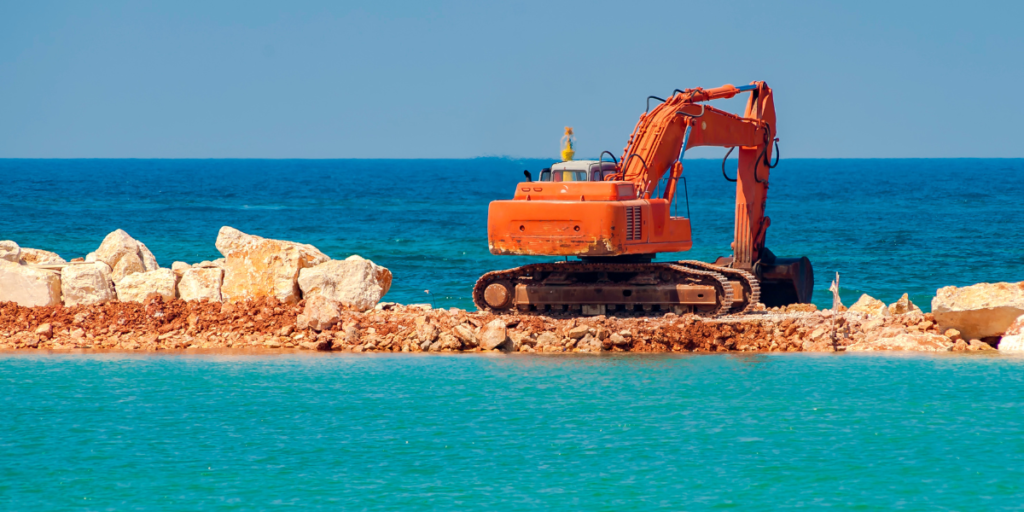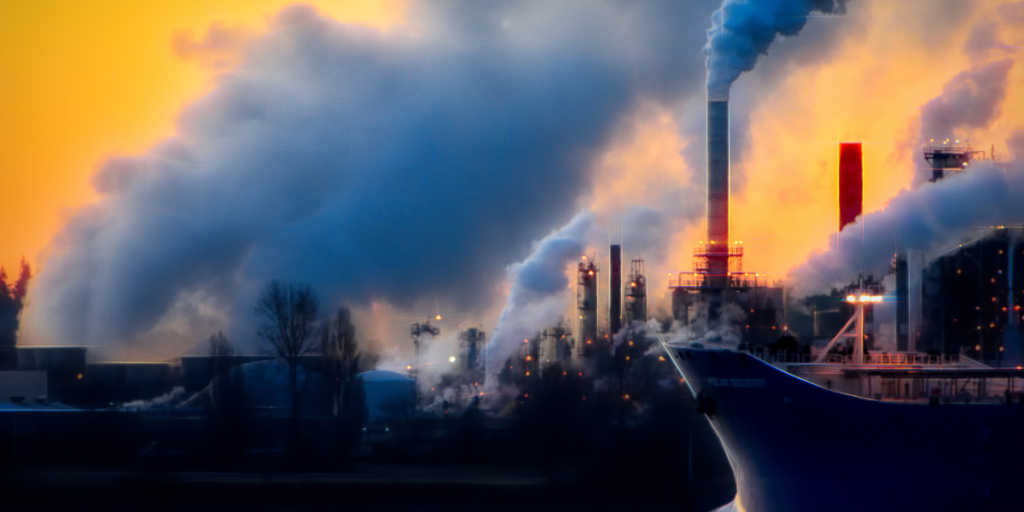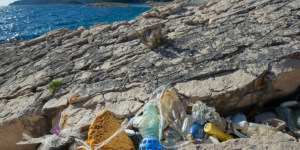Coastal Transformation: Unraveling the Effects of Development on Marine Ecosystems
Have you ever wondered how your coastal development projects impact the marine life and habitats around you? As a developer, it is important to understand the consequences of your actions on the natural environment.
Changes in coastal development can have significant effects on marine ecosystems, including destruction of natural habitats, pollution and chemical runoff, overfishing and unsustainable practices, and climate change.
Coastal areas are home to some of the most diverse ecosystems on our planet. These areas provide critical habitat for thousands of species of plants and animals.
However, as human populations continue to grow and expand into these areas, we often destroy or modify these habitats to make way for new developments. Whether it’s building homes or commercial structures along shorelines or dredging channels for shipping traffic, each action has a ripple effect that can cause irreversible damage to these delicate ecosystems.
It’s essential that we recognize this impact and take steps towards sustainable coastal development practices.
Key Takeaways
- Coastal development can lead to the destruction of natural habitats and irreversible damage to delicate ecosystems.
- Building infrastructure along shorelines can introduce pollutants and chemicals that disrupt the food chain and cause long-term damage to ecosystems.
- Overfishing and unsustainable fishing practices can lead to significant declines in populations and destroy habitats for other marine life.
- Sustainable coastal development practices, such as protecting critical habitats, implementing sustainable fishing practices, and adapting to climate change, are essential for preserving marine life and habitats.
Destruction of Natural Habitats
The destruction of natural habitats is a direct result of increased coastal development, and it’s causing irreparable harm to marine life.
As more and more people move closer to the coast, the demand for land increases, leading to the development of resorts, ports, marinas, and other structures that disrupt the delicate balance of marine ecosystems.
The construction of these buildings often involves dredging or filling in wetlands or mangroves that serve as nurseries for fish and other marine organisms. This alteration destroys important breeding grounds and disrupts the ecological balance necessary for many species’ survival.
Conservation efforts are essential to mitigate this damage caused by coastal development. Governments need to enact laws that protect critical habitats from being destroyed or damaged during construction activities.
Developers must also be made aware of their responsibilities towards safeguarding marine life and habitats while building near coastal areas.
We all have a role in preserving our planet’s biodiversity, and it starts with recognizing how we impact our environment through our actions. Only by working together can we ensure that future generations will still be able to enjoy the beauty and diversity of our oceans’ flora and fauna.

Pollution and Chemical Runoff
When you live near the coast, it’s easy to forget that your actions can have a significant impact on marine life. Coastal development can introduce pollutants and chemicals into the water, which can be harmful to fish, sea turtles, and other aquatic species. These contaminants may also disrupt the food chain and cause long-term damage to ecosystems.
It’s crucial to be aware of how your choices affect the health of our oceans and take steps to minimize pollution from coastal development.
Introduction of Pollutants from Coastal Development
As you live near the coast, you may not realize how much your daily activities can introduce pollutants into marine habitats through coastal development. The construction of buildings, roads, and other infrastructure can lead to increased levels of sediment, debris, and chemicals being introduced into the ocean. These pollutants can have a significant impact on biodiversity by altering the physical and chemical properties of marine environments.
Coastal erosion is also a major concern when it comes to changes in coastal development. As natural habitats are destroyed or altered due to human activity, such as beachfront construction or dredging for shipping channels, erosion rates often increase. This can cause sedimentation and runoff that negatively affect water quality and harm marine life.
It is essential that we consider these impacts when making decisions about coastal development to ensure the health of our oceans and all the creatures that call them home.
Harmful Effects on Marine Life
You might not realize how much harm your daily activities near the coast can cause to marine creatures. Did you know that over 1 million seabirds and 100,000 marine mammals die each year due to plastic pollution?
Coastal development has a direct impact on biodiversity and ecosystem degradation. Here are four ways in which coastal development can harm marine life:
- Habitat destruction: Coastal developments such as land reclamation, dredging, and construction of ports or marinas destroy important habitats for many marine species.
- Pollution: Coastal developments introduce pollutants into the water that can be harmful to marine life. These include chemicals from industries, sewage discharge, oil spills from shipping vessels, and plastic waste.
- Overfishing: The increase in human population along the coast has led to overfishing of many species that play an important role in maintaining a healthy ecosystem.
- Noise pollution: Activities like dredging, pile driving, and boat traffic generate a lot of noise that can disrupt communication among marine animals such as whales and dolphins.
All these factors combined have a significant impact on the health of our oceans and its inhabitants. It’s essential to understand that our actions have consequences on the environment around us and take steps towards sustainable coastal development practices that minimize their negative impacts on biodiversity and ecosystem degradation.
Overfishing and Unsustainable Practices
Hey, did you know that if we keep up with our overfishing and unsustainable practices, our marine ecosystems could be in serious trouble?
Overfishing occurs when fish are caught faster than they can reproduce, leading to significant declines in populations. Unsustainable fishing practices such as bottom trawling and dredging damage the ocean floor and destroy habitats for other marine life. These activities not only harm the species being targeted but also have ripple effects throughout the entire ecosystem.
To combat this issue, sustainable fishing practices must be implemented. This includes setting catch limits based on scientific data and implementing regulations to protect vulnerable species.
Marine conservation efforts such as establishing marine protected areas can also provide a safe haven for these species to thrive. By taking action now, we can ensure that future generations will continue to enjoy healthy oceans filled with diverse marine life.
Climate Change and Rising Sea Levels
Get ready to face the reality, because with climate change and rising sea levels, our oceans are rapidly changing and affecting everything from weather patterns to the survival of coastal communities.
In fact, studies have shown that sea levels have risen by an average of 8 inches since 1880 and are expected to rise even faster in the coming years due to melting ice caps and thermal expansion. These changes not only impact marine life but also affect human communities that rely on the ocean for food, transportation, and recreation.
To address these challenges, adaptation strategies and mitigation measures need to be implemented. One example of an adaptation strategy is building seawalls or other protective structures to prevent flooding in low-lying areas. Additionally, communities can implement policies that restrict development in vulnerable areas or require buildings to be elevated above projected flood levels.
Mitigation measures include reducing greenhouse gas emissions through cleaner energy sources or carbon capture technologies. By taking proactive steps now, we can help ensure a sustainable future for both marine life and coastal communities.

Solutions for Sustainable Coastal Development
As you walk along the sandy shore, you’ll notice how sustainable coastal development can involve using natural materials and methods to create infrastructure that blends seamlessly into the surrounding environment.
Implementing green infrastructure, such as rain gardens and bioswales, can help manage stormwater runoff and reduce erosion while providing habitat for wildlife.
In addition, incorporating native vegetation in landscaping can enhance biodiversity and provide food sources for local species.
Community involvement is also crucial for successful sustainable coastal development. Engaging with local residents and stakeholders through public meetings and workshops can ensure that their needs are considered in planning decisions.
Additionally, creating partnerships with businesses and organizations can lead to innovative solutions that benefit both the environment and the economy.
By working together towards a common goal of preserving marine life and habitats, we can create thriving coastal communities that are resilient to future challenges.
Frequently Asked Questions
What are some specific examples of marine life that are negatively impacted by coastal development?
Did you know that coastal development has caused a decline of up to 50% in seagrass beds, negatively impacting marine life such as sea turtles and manatees? Specific examples of impacted species include coral reefs, salt marshes, and estuaries. Impact analysis shows that these habitats provide critical nursery grounds for various fish species.
How do different types of pollution affect marine life and habitats in coastal areas?
Marine pollution, such as oil spills and plastic debris, can harm marine life and habitats in coastal areas. Coastal erosion exacerbates the problem by spreading pollutants further. Research shows that addressing these issues is crucial for protecting biodiversity and promoting sustainable development.
What are some alternatives to overfishing and unsustainable practices in coastal communities?
You can help protect coastal ecosystems by supporting sustainable fishing practices, participating in community initiatives to reduce waste and pollution, and choosing eco tourism opportunities that promote conservation. These efforts can enhance biodiversity while providing economic benefits.
How do rising sea levels and climate change contribute to the degradation of coastal habitats?
As sea levels rise due to climate change, coastal habitats face degradation. Adapting strategies and conservation efforts can mitigate these effects. Parallelism creates images of thriving marine life in a sustainable future that you can help build.
What are some practical steps that coastal communities can take to promote sustainable development and protect marine life and habitats?
To promote sustainable practices and protect marine life, coastal communities can engage in community-based planning, implement green infrastructure, and reduce pollution. These actions not only benefit the environment but also foster a sense of belonging and pride within the community.
Conclusion
Congratulations! You’ve learned how coastal development affects marine life and habitats.
You now know that the destruction of natural habitats, pollution and chemical runoff, overfishing and unsustainable practices, as well as climate change and rising sea levels are all major factors that contribute to the decline of our oceans.
However, don’t despair! There are solutions for sustainable coastal development. Reduce your carbon footprint by driving less or using energy-efficient appliances. Choose seafood that’s sustainably harvested and support conservation efforts in your local area.
Together we can protect our planet’s precious ecosystems for generations to come.
In summary, remember the four Ps: protect natural habitats, prevent pollution through proper waste management practices, practice sustainable fishing methods, and prioritize action against climate change.
By implementing these simple steps into your daily routine, you can help preserve our oceans’ health and ensure a brighter future for us all.
Keep calm and conserve on!




